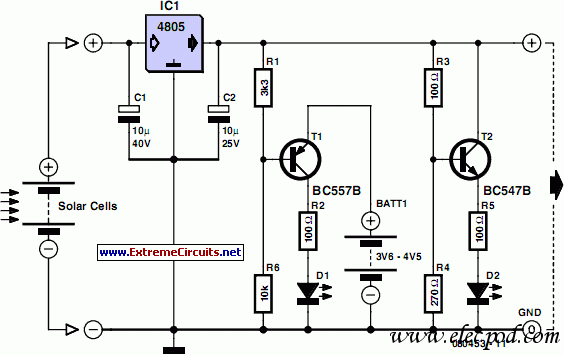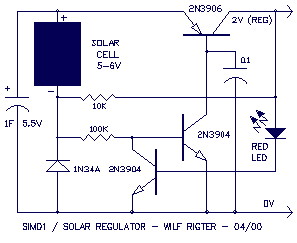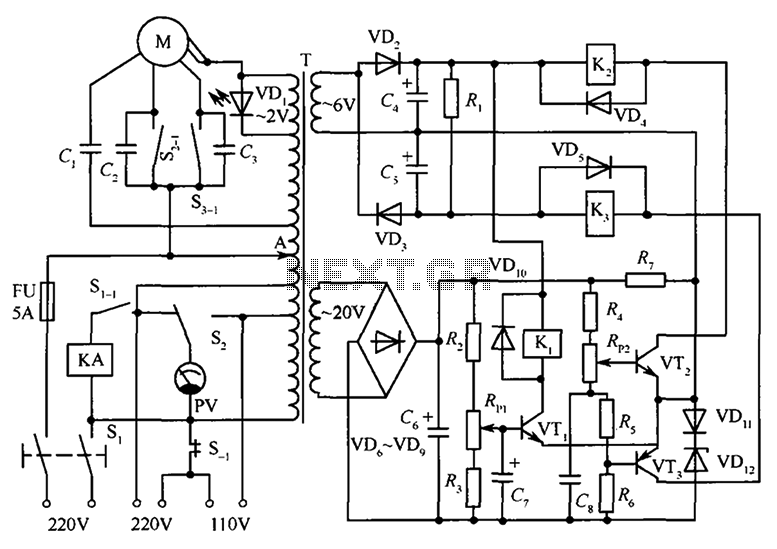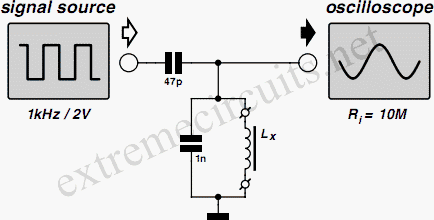
Battery-Voltage Measuring Regulator
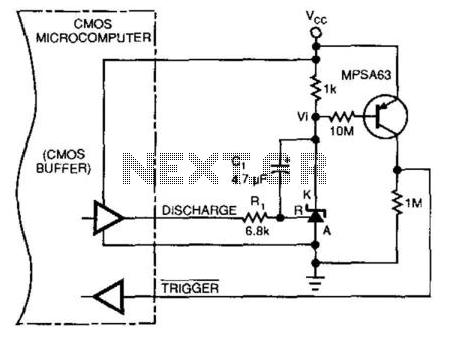
This circuit enables a microprocessor system to measure its own battery voltage. A Texas Instruments TI43 precision shunt regulator functions as a precise reference and integrator/amplifier, measuring its own supply through voltage-dependent charge and discharge time intervals. It is important to implement a brief control and voltage calculation software routine for the system.
The circuit design incorporates a Texas Instruments TI43 precision shunt regulator, which is known for its stability and accuracy in voltage regulation applications. The TI43 operates by maintaining a constant output voltage, which serves as a reference point for measuring the battery voltage.
To facilitate the measurement process, the circuit includes an integrator/amplifier configuration that captures the voltage across the battery. The voltage-dependent charge and discharge time intervals are critical; they allow the circuit to respond accurately to changes in battery voltage. This is achieved by monitoring the time taken for the capacitor in the integrator circuit to charge and discharge, which varies based on the battery voltage level.
The output from the integrator/amplifier is then fed into the microprocessor, which requires a software routine to interpret the voltage levels. This routine should include algorithms to calculate the battery voltage based on the measured time intervals and the known characteristics of the TI43 shunt regulator. The software will likely involve analog-to-digital conversion processes, ensuring that the microprocessor can read the voltage levels accurately and make decisions based on the battery's state.
In summary, this circuit not only measures the battery voltage effectively but also integrates seamlessly with the microprocessor system, requiring careful software development to ensure accurate readings and appropriate responses to varying battery conditions. This circuit allows a microprocessor system to measure its own battery voltage. A Texas Instrument TI43 1 precision shunt regulator acts as a precision reference and integrator/amplifier, measuring its own supply via voltage-dependent charge/discharge time intervals. Notice that you must write a short control and voltage calculation software routine for your system.
The circuit design incorporates a Texas Instruments TI43 precision shunt regulator, which is known for its stability and accuracy in voltage regulation applications. The TI43 operates by maintaining a constant output voltage, which serves as a reference point for measuring the battery voltage.
To facilitate the measurement process, the circuit includes an integrator/amplifier configuration that captures the voltage across the battery. The voltage-dependent charge and discharge time intervals are critical; they allow the circuit to respond accurately to changes in battery voltage. This is achieved by monitoring the time taken for the capacitor in the integrator circuit to charge and discharge, which varies based on the battery voltage level.
The output from the integrator/amplifier is then fed into the microprocessor, which requires a software routine to interpret the voltage levels. This routine should include algorithms to calculate the battery voltage based on the measured time intervals and the known characteristics of the TI43 shunt regulator. The software will likely involve analog-to-digital conversion processes, ensuring that the microprocessor can read the voltage levels accurately and make decisions based on the battery's state.
In summary, this circuit not only measures the battery voltage effectively but also integrates seamlessly with the microprocessor system, requiring careful software development to ensure accurate readings and appropriate responses to varying battery conditions. This circuit allows a microprocessor system to measure its own battery voltage. A Texas Instrument TI43 1 precision shunt regulator acts as a precision reference and integrator/amplifier, measuring its own supply via voltage-dependent charge/discharge time intervals. Notice that you must write a short control and voltage calculation software routine for your system.
